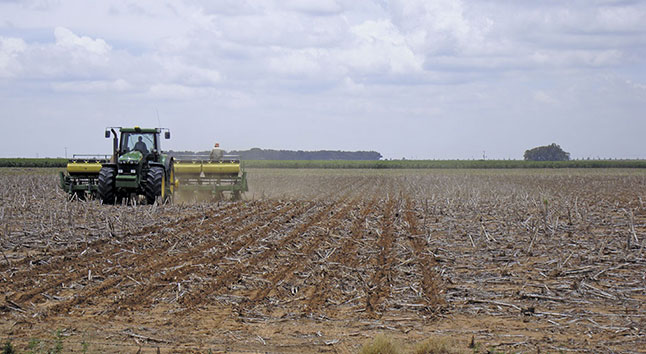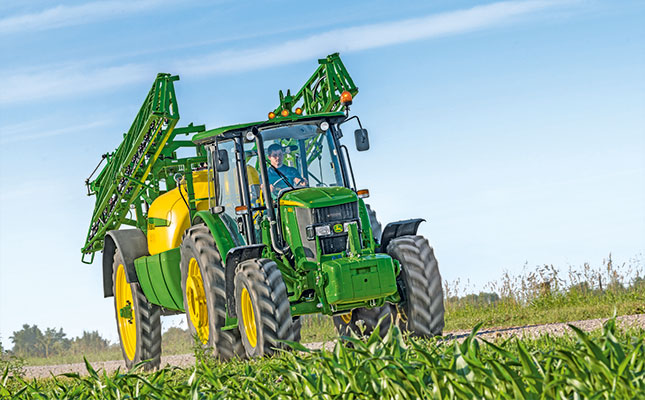
Do you agree that volatility in agricultural markets and input prices have indeed increased in recent years?
Volatility in agricultural markets have increased in recent years and has almost become the new norm. There’s also been an increase in farm requisites and inputs. For example, over the years, and especially in the past season, we have seen grain prices reaching record levels – a major input for meat production.
What are the main drivers of market and input price volatility?
Volatility is mainly driven by supply challenges. Weather and the nature of food production can also have a significant impact on price development, especially when there is uncertainty on supply availability.
Crude oil and fertilser prices also have an impact on the volatility of agricultural markets. Dramatic fluctuations in exchange rates too can result in volatile markets.
It should also be taken into account that price discovery on the input side often takes place up to nine months prior to when the farmer’s produce is presented to market.
How can farmers increase their resilience to these types of volatilities given that the majority are price takers?
The fluctuating prices have made it difficult for farmers to budget for the coming season. Therefore, a farmer will need a multi-faceted strategy to mitigate production and price risk.
One thing farmers can do is to buy inputs in advance before mid-year price increases. On the other hand, when they do their budgets they should build in a number of scenarios to stress test their business, then they would know when to execute a certain strategy.
Add to this the option of building in certain trigger/price levels where a farmer needs to reconsider his or her production plan. This can help in deciding whether to plant or not, and what to plant.
Having a diversified business enterprise is another good strategy. In the case of intensive livestock production, for example, the farmer can also produce grain. When there is volatility of feed costs, those shocks can be absorbed along the value chain.
What products or services does Standard Bank offer to help farmers cope with market and input price volatility?
Standard Bank provides production loans against grain contracts, where prices are hedged. Subject to the risk assessment, the product is flexible enough to allow for different variations of hedging.
Do you think the agriculture sector is responding quickly enough and sufficiently to the increased climate volatility caused by climate change?
The industry has done a lot to respond timeously to climate changes. Domestic production over the years has been increasing and improving as a result of the improved cultivars developed to adapt to climate changes. We have also seen most farmers applying improved production methods.
It is important in extreme cases that there is intervention at a broader, government level to assist the industry to ensure food security. There should essentially be a plan in place for disastrous seasons, so that response time can be quick and most farmers can find the necessary help to remain in business.
How does the threat posed by climate change affect the way in which the bank is planning future services to farmers?
Standard Bank has been financing agriculture for over 150 years and has gone through a number of drought years with the industry. Our expertise and understanding of the industry makes it possible to evolve with technological developments and be able to offer appropriate solutions.
We encourage our clients to use sustainable farming practices. The bank offers finance for water treatment plants, as we encourage farmers to recycle water.
We established a separate desk in our commercial bank that specifically looks at renewable resource solutions and its funding.
The effect of climate change requires us to be even closer to the respective industries to ensure we stay on top of developments, and where appropriate provide support.
What changes do you foresee in the crop insurance market as a result of the threats posed by climate volatility?
We expect to see lower guarantees and, in severe instances, no insurance cover for drought-stricken areas. This calls for innovation in the industry where insurance can’t be the only risk mitigating tool.
How can emerging and small-scale farmers be supported in a more volatile market environment?
Economy of scale is important in agriculture as it helps farmers to optimise their costs somewhat. Therefore, the creation of a framework and environment where small-scale farmers work as a collective needs to pursued.
Agri-parks could potentially be part of such a framework. Another possibility is access to market and price discovery at regional market level, of which an example exists in the Tzaneen area, where leading roleplayers such as ZZ2 are supporting the framework.
Our support of organised agriculture that specifically supports small-scale farmers will continue to ensure they can execute the work to assist this segment of the agricultural landscape.
What type of response would you like to see from government in assisting farming to cope with the challenges posed by increased volatility?
Ensuring policy certainty and stability with reference to regulatory and legislative framework around land and water rights and usage.
Considering a level of government support towards insurance for agriculture and mitigating climatic risks.
Financial and technical support to emerging farmers via the appropriate channels which could include collaboration with private sector to enhance delivery.













